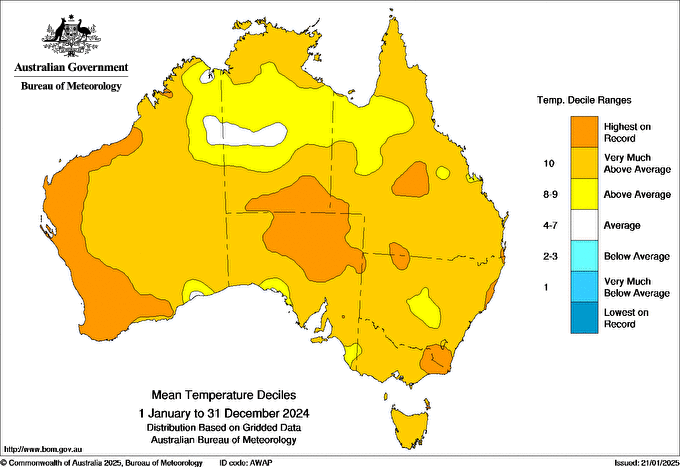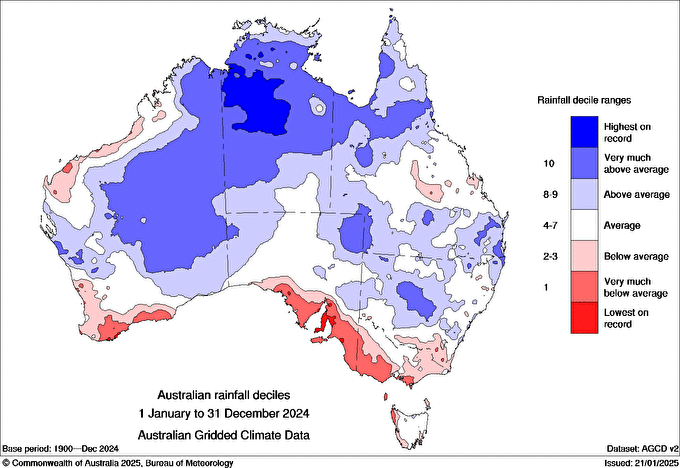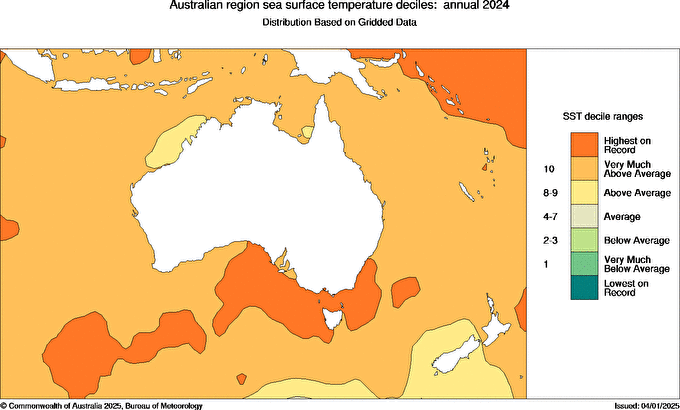Victorians experienced well below average rainfall and near-record average temperatures in 2024, the Bureau of Meteorology’s Annual Climate Statement reveals.
Across the state, Victoria had 529mm of rain in 2024, about 20 per cent below average, with below to very much below average rainfall in most areas, the statement said. Very much below average means that rainfall was in the lowest 10 per cent since reliable records began in 1900.
Meanwhile, Victoria’s temperature in 2024 was 1.08 °C warmer than the long-term average, making 2024 the equal fifth warmest year in Victoria since reliable records began.

Drier conditions, particularly in the west of Victoria, and our very warm summer have taken their toll with a series of bushfires, the worst of those devastating large areas of the Grampians and Little Desert national parks and private property nearby.
Rainfall in Victoria defied the national trend, according to the statement. Australia overall experienced its eight wettest year on record, recording an average of 596mm – 28 per cent above average.

Melbourne recorded 591mm of rain in 2024, the third lowest of the Australian capitals behind Adelaide (347mm) and Canberra (568mm), while Sydney was the second wettest (1604mm) trailing Darwin (1982mm).
Temperatures across the nation were the second warmest on record, 1.46 °C warmer than the long-term average and the warmest since 2019.
Sea surface temperatures were also the highest on record for all Victorian waters in 2024.

Climatology Specialist Nadine D’Argent said Australia was warmer than average throughout the year in most of the country, with spring the warmest ever recorded and the 2023-24 summer the third warmest ever.
“It was the wettest year since 2011, with overall rainfall 28% above average,” Ms D’Argent said.
“While much of northern Australia and some inland areas had above average rainfall, it was much drier than usual in Victoria, parts of South Australia and some parts of the west.”
Globally, 2024 was the warmest year on record and the warming in Australia is consistent with global trends.
Read the 2024 BoM Annual Climate Statement here.

